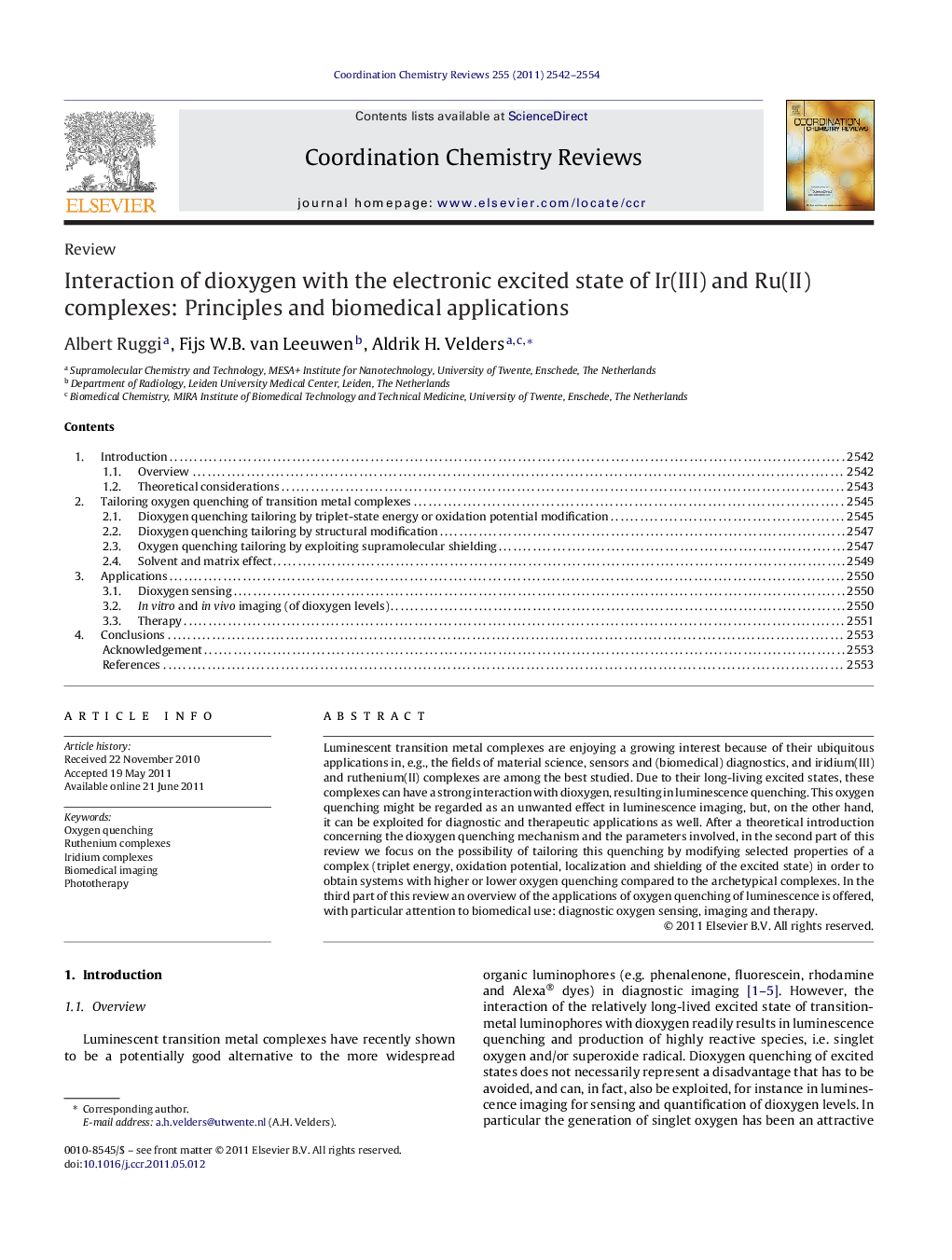| Article ID | Journal | Published Year | Pages | File Type |
|---|---|---|---|---|
| 1299183 | Coordination Chemistry Reviews | 2011 | 13 Pages |
Luminescent transition metal complexes are enjoying a growing interest because of their ubiquitous applications in, e.g., the fields of material science, sensors and (biomedical) diagnostics, and iridium(III) and ruthenium(II) complexes are among the best studied. Due to their long-living excited states, these complexes can have a strong interaction with dioxygen, resulting in luminescence quenching. This oxygen quenching might be regarded as an unwanted effect in luminescence imaging, but, on the other hand, it can be exploited for diagnostic and therapeutic applications as well. After a theoretical introduction concerning the dioxygen quenching mechanism and the parameters involved, in the second part of this review we focus on the possibility of tailoring this quenching by modifying selected properties of a complex (triplet energy, oxidation potential, localization and shielding of the excited state) in order to obtain systems with higher or lower oxygen quenching compared to the archetypical complexes. In the third part of this review an overview of the applications of oxygen quenching of luminescence is offered, with particular attention to biomedical use: diagnostic oxygen sensing, imaging and therapy.
► Strategies to tune luminescence quenching of Ru(II) and Ir(III) complexes by oxygen. ► Triplet energy and oxidation potential direct luminescence quenching feasibility. ► Localization of the excited state electron density allows specific tuning strategies. ► Biomedical applications of luminescence quenching by oxygen in diagnostics and therapy.
